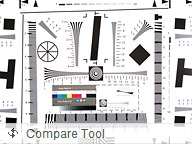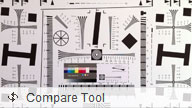LG Optimus Black review: Black and bright
Black and bright
Camera is a mixed bag
LG Optimus Black comes with a 5 megapixel shooter, capable of capturing 2592 x 1944 resolution images.
We found the user interface to be quite convenient, though many of the important settings are inside the extended settings menu, so they take a while to toggle.
Also the whole camera experience would have been much more convenient if there was a camera button onboard, but that has obviously been sacrificed in favor of a slimmer profile.
The camera features are limited to geo-tagging and touch focus along with ISO setting and preset scenes and effects. There’s panorama shot and “out-focusing shot”, which artificially blurs anything away from the chosen point of focus. There’s beauty and art shot too, which do automatic post-processing to the photo. Digital image stabilization is also available.
In terms of image quality, the Optimus Black camera is certainly not among the best in the 5MP league. Photos generally lack detail and contrast and could use some sharpening.
On the positive side, the noise levels are surprisingly low and overall the Optimus Black image quality is just about equal or even better than Samsung Galaxy S still camera.
Photo quality comparison
Overall, the pics from the LG Optimus Black are just about equal or even slightly better (in terns of noise) than those by the Samsung Galaxy S. The Apple iPhone 4 is a stride ahead of the two even though it traditionally exhibits plenty of luminance noise.



LG Optimus Black in our Photo Compare Tool
HD video recording
The Optimus Black is among the smartphones, capable of capturing HD 720p videos. FullHD videos are an obvious no-go as there just isn’t enough processing power to back them up.
The camcorder UI is basically unchanged from the camera one. In terms of options you can choose the resolution of the video, white balance, color effects, video quality and duration.
Unfortunately, the LG Optimus Black manage to disappoint us with video recording. Despite the fact it's running a final stock firmware version (V10a, if you need to know), all of its clips came out with messed up aspect ratio once you download them off the phone. Here's a sample we uploaded to YouTube.
Also make sure you check out this full untouched video sample taken straight from the camera. You need to manually force your video player to the correct aspect ratio of 16:9.
The only good things we can say about these videos is that they sem to have fluid framerate and some natural colors so once LG fix that, the Optimus Black camcorder should be considered as good alright. We sure hope it's some sort of a pre-release bug that won't make its way to retail units.
Video quality comparison
Much like with the still camera, the LG Optimus Black is much on par with the Galaxy S in video recording too, though we gotta admit the Galaxy S has an edge here in the amount of resolved detail. The margin gets even bigger in the low light scene where the Optimus Black smears the fine detail, underexposes the whole shot and still manages to show up more color noise than the Galaxy S. But that's nitpicking, we guess in day to day situations, you could call these two tie.



LG Optimus Black in the Video Compare Tool
Smart connectivity
The LG Optimus Black comes with a big range of connectivity options. It has quad-band GSM/GPRS/EDGE for global roaming and three-band HSDPA with 7.2 Mbps of download and 5.76 Mbps of upload speeds (hypothetical ones). There’s also Wi-Fi b/g/n support, DLNA, Wi-Fi Direct and Hotspot capabilities.
The lacking features include Bluetooth 3.0 (there’s version 2.1 with A2DP support) and an HDMI port.
SmartShare is an app, that lets you control a DLNA network – you can play media from other devices (e.g. NAS) on your phone or play something from the phone on another device (e.g. DLNA-enabled TV).
Wi-Fi Direct leading the way to file-sharing revolution
The Wi-Fi Direct standard is still to roll on a mass scale but we finally see it on smartphones such as the second generation Galaxy S and the Optimus Black. It’s a technology which enables devices to connect to each other without the need for a Wi-Fi hotspot. The beauty in it is that only one device has to be Wi-Fi Direct-ready in order for the magic to happen.
Using this technology two (or up to eight) devices can share files in a more advanced, fast and secure way, paving the road to the inevitable Bluetooth demise. This is something we’ve seen before with the replacement of the infrared technology for the Bluetooth one and now it seems bound to happen with Wi-Fi Direct becoming widespread.
The first Wi-Fi Direct-certified device was the acclaimed Galaxy S I9000, last year. But in order to use this technology the phone must have the appropriate software for it and so far it’s not been provided for either Wi-Fi Direct device. LG showcased such a technology at CES 2011, using an app called Wi-Fi Cast, which is sadly missing from our unit. We dug the Android Market in hopes to find a replacement app but we without luck. So until such an app surfaces or manufacturers provide their phones with the required software, we can only wait for the true Wi-Fi Direct coming.


Connecting Optimus Black with Galaxy S II
Still we connected our LG Optimus Black with the Samsung Galaxy S II through Wi-Fi Direct and there were no speed bumps in the road. The time it took to connect the two devices wasn’t more than the time to do the same, using Bluetooth.
We hope to see developments on using this technology in the near future, as it doesn’t seem all that improbable for it to become mainstream during the course of this year. Maybe a software update or a tweak will do the trick but for now we’ll have to wait.
Flashy web browser
The Android browser is one of the best available on a mobile device – put it on a beautiful screen, like the Black’s and it provides flawless experience.
The user interface is completely minimalistic (it’s the Google way). All you get on the screen is an address bar and +/- zoom buttons. The address bar is placed on top of the page, so scrolling down moves it out of view and the zoom controls auto-hide.
The interface is still very powerful – hit the menu key and six keys pop up. You can open a new tab, switch tabs, refresh the page, go forward, and open bookmarks. The final button reveals even more options (text copying, find on page, etc.).
The Optimus Black supports double tap zoom and pinch zoom. There’s text reflow too – it adjusts the columns of text to fit the screen width. If you’ve zoomed in using pinch zoom, you need to double tap the screen to make the browser reflow the text.



Browser bookmarks, most visited and history tabs
The bookmark list shows a thumbnail of the bookmarked page and you also get a “most visited” list in addition to the history.
The whole browsing experience is excellent – there’s almost no lagging and the 4” WVGA screen offers plenty of room even for complex web pages. Text remains crisp regardless of zoom level.
The Optimus Black browser is Flash-enabled and everything ran very smoothly – from desktop YouTube (and other video sharing sites) to touch-oriented Flash games. Still don’t expect to run a 720p video on a webpage and pan around the page with no lag. The single-core CPU inside the Optimus Black maxes out in those cases.
Reader comments
- liibaan
- 21 Mar 2015
- Nvw
I can't download some application just like whatsapp viber i need help
- kbaba
- 07 Jun 2014
- fsV
Why lg p-970 have antenal (Area) an what is working for
- Bernardo
- 22 Feb 2014
- Np}
Ive had my phone for nearly two years and had no problems at all. Will be upgrading soon...just waiting for the release of the Samsunh S5...but I will never get rid of my LG.






















